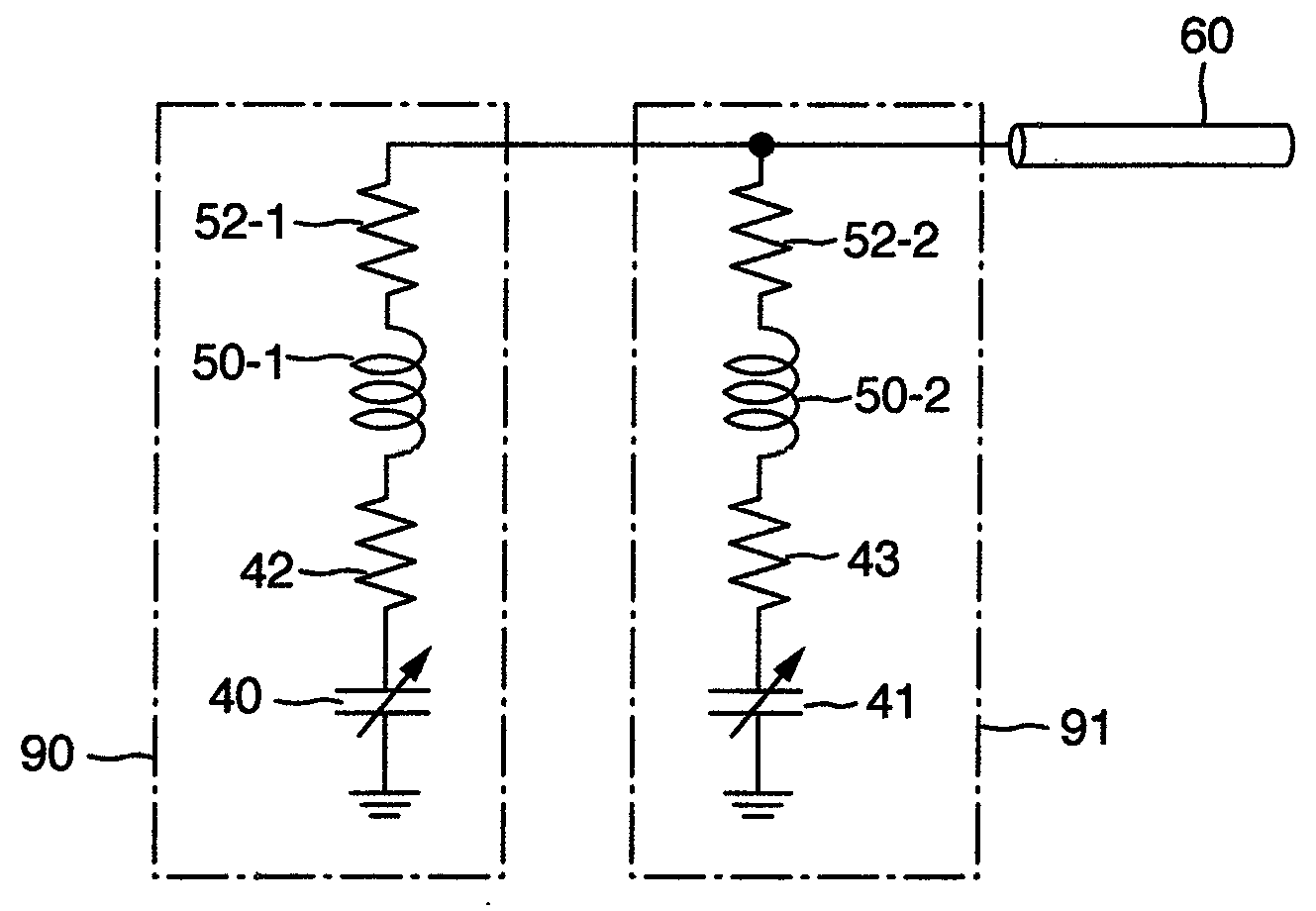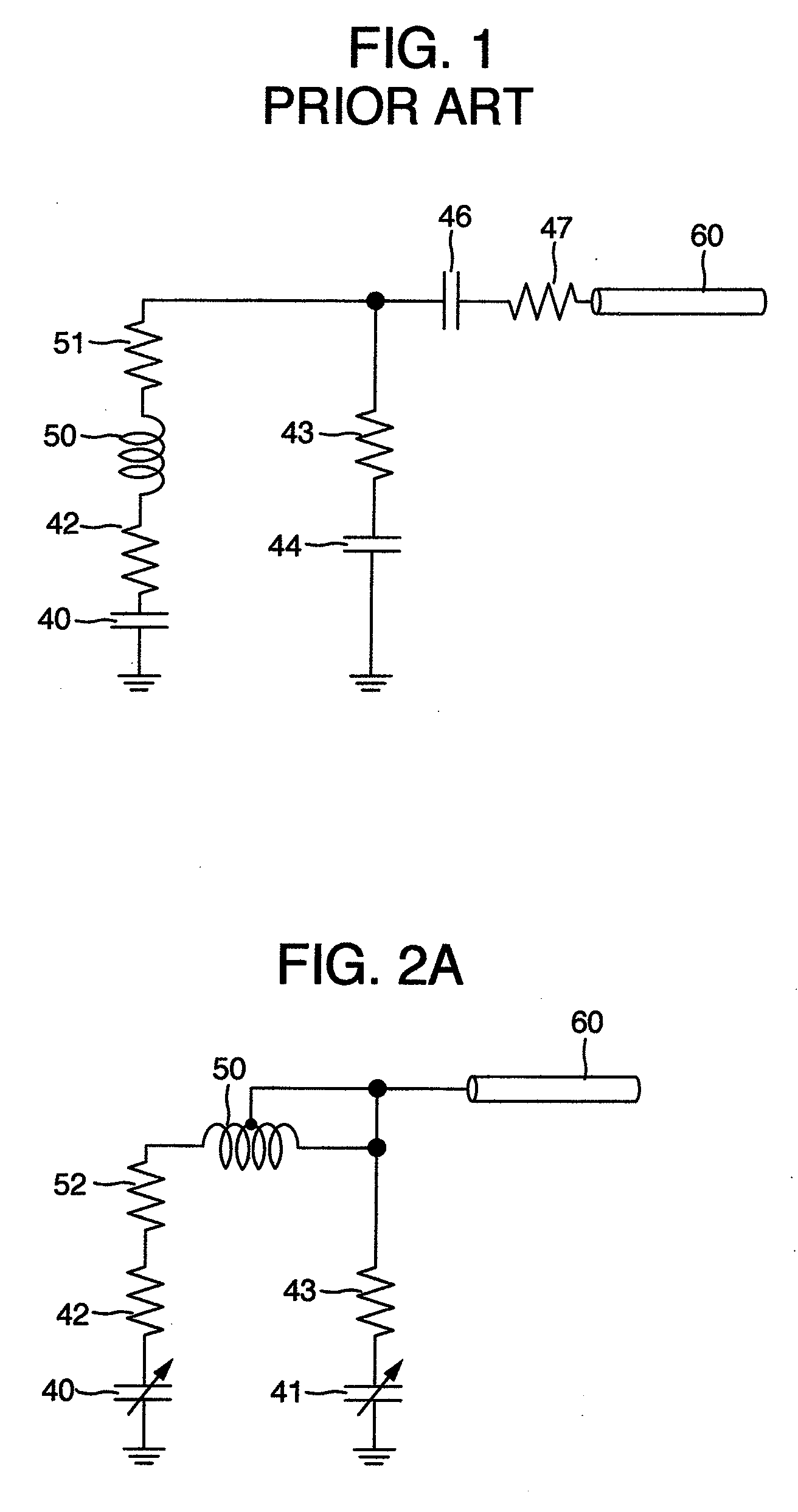Probe for nmr measurement
a nuclear magnetic resonance and probe technology, applied in the direction of magnetic measurement, instruments, measurement devices, etc., can solve the problems of increasing reducing resistance of rf coils, increasing resistances of inductive losses, etc., to achieve high transmitting/receiving efficiency, low resistive loss, and high transmitting/receiving efficiency
- Summary
- Abstract
- Description
- Claims
- Application Information
AI Technical Summary
Benefits of technology
Problems solved by technology
Method used
Image
Examples
first embodiment
[0060]FIG. 6A is a perspective view showing the overview and the arrangement of the main components of an NMR apparatus of the present invention. An evenly distributed magnetic field (static magnetic field) is generated by superconducting magnets 10-1 and 10-2, which are divided into two, along the center line indicated by a chain line. This is indicated by the arrow B0. A sample tube 30, which contains a sample 31, is inserted from the direction vertical to the static magnetic field (x-axis direction in the figure). A probe 20, which contains a solenoidal radio frequency (RF) coil 25 for detecting signals from the sample 31, is inserted from the same direction as that of the static magnetic field. The probe 20 comprises the radio frequency (RF) coil 25 and a probe container 23 in which the radio frequency (RF) coil 25 is stored. Measuring equipment 35 sends a high frequency signal to the radio frequency (RF) coil 25 via the signal line 60, receives a high frequency signal from the ...
second embodiment
[0066]In a second embodiment, a multiple nuclei measuring probe having a solenoidal radio frequency (RF) coil is proposed as in the first embodiment. FIG. 9 is a diagram showing the configuration of a radio frequency (RF) coil in the second embodiment. In this embodiment, a 9-turn solenoidal radio frequency (RF) coil is used. The material of the RF coil is Cu wires. A fifth lead line 75 is connected to the position at which the RF coil element L2 between the point B and the point C in an RF coil 50 is divided into two turns and three turns, and the end of the fifth lead line 75 is connected to the core line of a signal line 60. The other configuration, such as the configuration of lead lines and the arrangement of the trimmer capacitors, are the same as those in the first embodiment.
[0067]As a result of resonance characteristics evaluation made by using the circuit configuration described above as an radio frequency (RF) coil circuit for measuring the H nuclei and the D nuclei, it i...
third embodiment
[0069]In a third embodiment, the configuration, in which a saddle-type probe RF coil is used, is proposed. The saddle-type probe RF coil may be used for an NMR apparatus that generates a vertical direction static magnetic field (B0) using a cylindrical magnet. FIG. 10A is a diagram showing the configuration of the NMR apparatus that generates a vertical direction static magnetic field. A cylindrical superconducting magnet 10 generates an evenly distributed magnetic field along the centerline indicated by a chain line. A probe 20 and a sample tube 30, which contains a sample 31, are inserted from the same direction as that of the static magnetic field (z-axis direction in the figure). The probe 20 comprises a radio frequency (RF) coil 25, a probe end stage 26, and a probe container 23 that contains them. Measuring equipment 35 sends a high frequency signal to the radio frequency (RF) coil 25 via a signal line 60, receives a high frequency signal from the sample 31, analyzes the resul...
PUM
 Login to View More
Login to View More Abstract
Description
Claims
Application Information
 Login to View More
Login to View More - R&D
- Intellectual Property
- Life Sciences
- Materials
- Tech Scout
- Unparalleled Data Quality
- Higher Quality Content
- 60% Fewer Hallucinations
Browse by: Latest US Patents, China's latest patents, Technical Efficacy Thesaurus, Application Domain, Technology Topic, Popular Technical Reports.
© 2025 PatSnap. All rights reserved.Legal|Privacy policy|Modern Slavery Act Transparency Statement|Sitemap|About US| Contact US: help@patsnap.com



